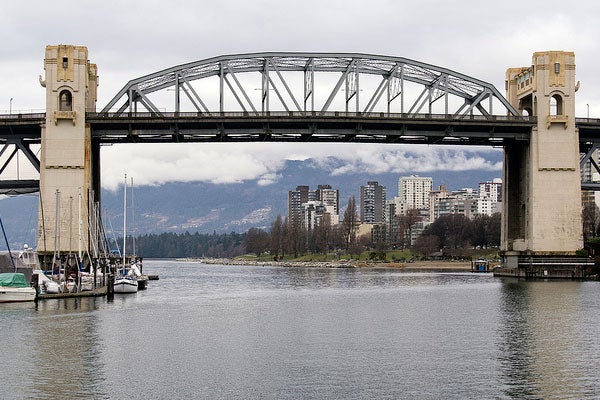
Mowat Centre: cities need a bigger say in infrastructure
Published: November 30, 2015
A new Mowat Centre report offers guiding principles to the federal government on helping municipalities through spending on infrastructure – not just handing out money but being strategic about it.
The report, titled From the Ground Up: The Role of Local Governments in Building Canada’s Economic Infrastructure Network, argues that while commitments from the new government in Ottawa to double infrastructure spending are promising, it is crucial to act strategically and “get the most out of each dollar spent.”
Sara Ditta, author of the report, told U of T News that infrastructure spending has suffered from a “fragmented” approach and that she hopes to “change the conversation a little.” The Mowat Centre is an independent public think tank located at the School of Public Policy & Governance at U of T.
In the 1950s, the federal government owned the most infrastructure while municipal governments owned the least. That has changed significantly.
The federal government now owns 12 per cent while local governments account for 51 per cent (provincial governments own the rest). Locally-owned infrastructure includes roads, bridges and other means of connecting broader trade networks.
“These are crucial parts of the system for delivering goods and services to and from Canada,” the report says. “A port, airport or international hub is likely to be as efficient and effective as the infrastructure to which it is connected – much of which is owned, operated and maintained by local governments.”
Prime Minister Justin Trudeau says he is committed to giving Canadian municipalities a voice in making decisions, something critics say has been lacking for several years.
The report states that “local insights are often overlooked” by other levels of government and that municipalities have “limited opportunities to contribute to discussions on strategic infrastructure investments of national importance.” Local governments can provide significant knowledge and expertise in this area.
Infrastructure “is closely tied to productivity and quality of life in several ways,” the report states. Congestion, it suggests, is costing about $15 billion a year, or nearly one per cent of Canada’s GDP. Poor infrastructure results in increased costs and decreased returns on investment. All this can be ultimately detrimental to Canada’s economic prosperity.
One of the barriers municipalities have to overcome is the lack of fiscal tools to fund infrastructure. “Local governments are forced to raise funds primarily through property taxes,” the report says, “which are an inflexible and inefficient way to raise revenue.” Municipalities are estimated to receive only eight cents of every tax dollar raised across the country.
“It is considered unrealistic to expect to close local infrastructure funding gaps with such a strong reliance on property taxes,” the report continues. “Other sources of tax revenue by local governments in other countries to fund infrastructure projects include income taxes, consumption taxes, business taxes, tourist taxes and vehicle registration taxes.”
New revenue tools have been a topic of discussion at recent conferences at U of T, including one involving Toronto city manager Peter Wallace and President Meric Gertler, where Anne Golden, a U of T alumna and former head of the United Way of Greater Toronto, suggested raising revenue for transit through a city sales tax.
The Mowat report does not go as far as recommending a sales tax, but says that new mechanisms are needed to raise revenue and fund infrastructure projects strategically to ensure that public dollars go further.
“A first step,” the report suggests, “would be to look at new models already being used in provinces like Manitoba, which dedicated a portion of its provincial sales tax to infrastructure projects.”



